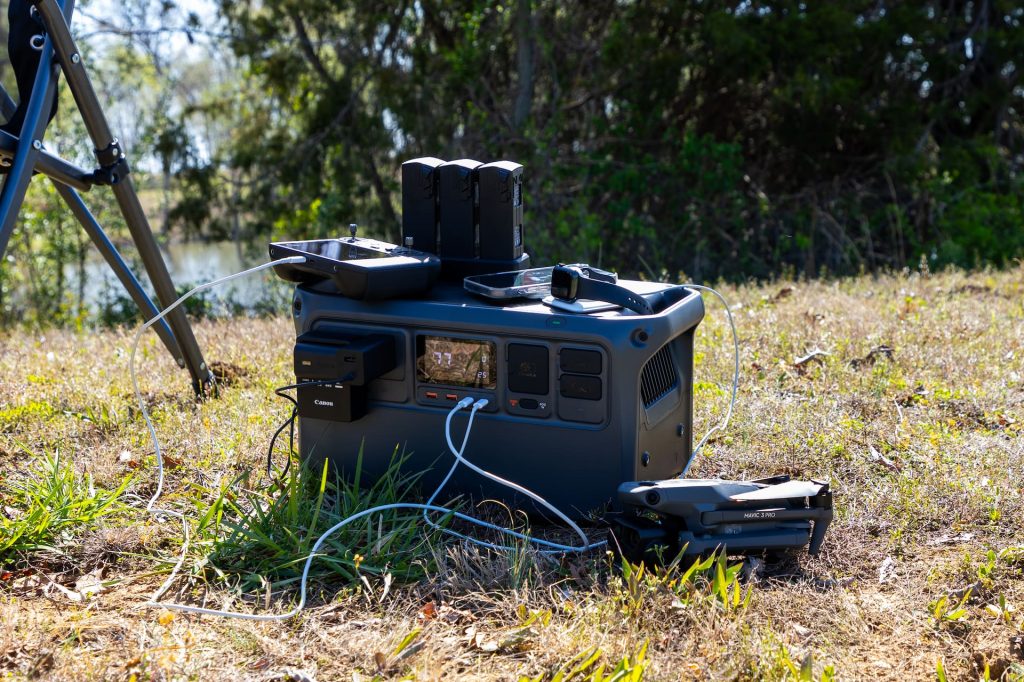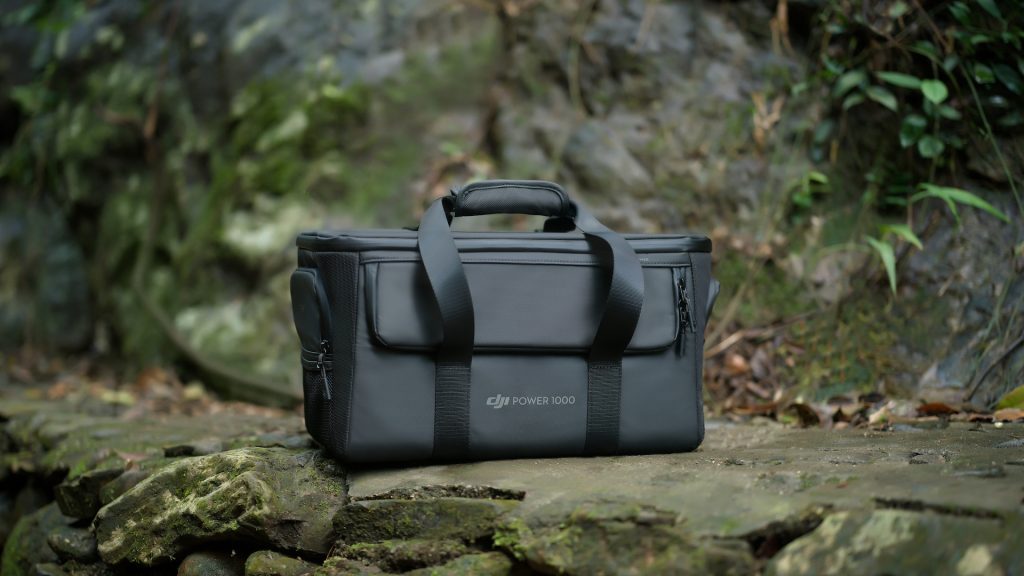
Today, DJI released its third product of April, DJI Power, a large battery system to replace the need to find outlets while outing the field. However, it’s much bigger than that, it’s truly a new market DJI is entering and as first generation product, is it any good?
DJI Power 1000 and 500
First, the DJI Power comes out in two flavors, the Power 1000, capacity of 1024 Wh, and the Power 500, capacity of 512 Wh. While they both can do many of the same features, this review will be focused on the Power 1000 as that is the one I received from DJI.
Disclaimer: I’m doing this review pretty blind to the power station market as a whole as I’ve never owned or even used a product like this before so I can’t really compare this to competitors from the likes of BLUETTI and Jackery. However, as someone that usually uses a lot of power while on the go, I did find a good use for it.
So let’s get past the basics, the DJI Power 1000 has two full size AC outlets, and a total of four USB plugs (two type-A and two 140W fast charging type-C). You might think that’s a little light on the USB ports, and personally I could have used a few more of them, but I never actually ran into a scenario where I ended up using all six ports/outlets.
For charging the power station, you can either plug it into the wall, your car, or the use of up to three solar panels. DJI advertises fully charging the battery in 70 minutes when plugging into the wall, and I can say that’s pretty darn close to what I saw. I did one charge from zero to 100% and several charges from partial states and they all took shorter than what I expected. The zero to 100% charge took about an hour which lines up with the 70 minute estimate.
Real word use cases
I took the DJI Power out to two different places, one that makes sense and another that I really just wanted to see what would happen.
First, I took it out to see last week’s total solar eclipse in Carbondale, Illinois. This is the closest I would expect the typical use case for this sort of product. Out camping our out all day with no power outlets in sight.
The product lived up to everything it said it would, I charged camera batteries, phones, and my laptop several times and it never got close to being drained. I wish I could have test the solar panels that day. One to see how well it charges over an entire day (I started the day at only about 60%) and two, to see how the eclipse changed the power gain.

The Power 1000 comes with a carrying case that doubles as a place for you to store all the included cables, while also having zippered openings for the front I/O and side vents. The back pocket is even large enough to store my laptop in while it’s charging.
As with all of DJI’s cases, they’re extremely high quality and I wouldn’t expect them to break or fall apart anytime soon. However, if you want unobstructed airflow while charging, you might want to take it out. While it didn’t get uncomfortably hot, it did get hotter than I expected while in the case. Something that might only be a concern if you’re charging it outside on a hot summer’s day but not inside your home.
Stress testing
The second place I took it was to a whiskey lottery. You might think that that doesn’t seem like a place that would push the DJI Power to it’s maxes but it was the perfect place to put what DJI says about the product to the test.
First, I partnered with Brewzle, the largest whiskey content creator on YouTube and TikTok. It was going to be a long day of battery top offs and powering several devices, including an air compressor to pump whiskey out of a barrel.
I fully charged the Power 1000 the night before because I honestly didn’t think it would last all day. This was before we received numbers about how long it can power certain appliances, so I was going in blind.

For most the day it served well as the main charging hub for Brewzle’s team. Phones, camera/drone batteries, laptops, and mics, we filled up almost all the ports with items to charge and we saw no issues with charging speeds.
In the afternoon we had to do what I was pretty nervous about, powering the air pump. We didn’t have any backup to power the pump, to far from outlets for extension cords to reach and the air compressor draws way too much power for a car to supply. There were over 100 people waiting to get bottles filled and if the battery died before the whiskey was all pumped out, a lot of people would be upset.
And guess what? After about an hour of powering the tool, it barely made a dent into the power station’s capacity. It was heavily used for a full nine hour day and we walked away still with about 40% battery left. Impressive for sure.
Who needs this product? And industry comparison
DJI is coming out swinging against the already entrenched portable power station market. However, DJI has the creative market secured pretty closely with its drones, cameras, and mics and many times you want or need to recharge these devices without leaving your location.
If you’ve ever found yourself in your car or at a coffee shop waiting on your batteries to recharge, it might be time to take a look at the DJI Power or any power station for that matter. Because unless you have a EV with full size outlets in the back, you’re going to be wasting your time and gas with any other option.
The DJI Power 1000, the only one I reviewed, comes in at $999, inline with similar BLUETTI and Jackery offerings. Comparing those models (the AC180 and Explorer 1000 respectively) you’ll get a pretty similar set up with a few differences in I/O. Both BLUETTI and Jackery will give you more AC outlets but both only come with a single fast charging USB-C. So I would say they’re all pretty much balanced in a vacuum of just these products. That might fall a part when you look at Jackery’s and BLUETTI’s entire line up of products, battery extenders, solar panels, etc. But you’ll need to look elsewhere for that detailed of a review.
Overall, DJI made a great product, yet again, and while it might not be an industry breaker like their drones, if you’re already in the DJI system, it just makes sense to add this to your tool chest.
FTC: We use income earning auto affiliate links. More.




Comments